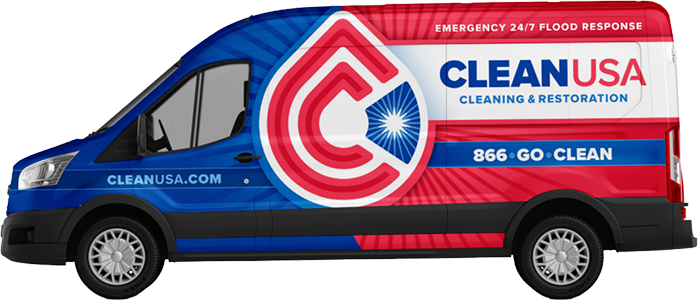If you’ve recently experienced water damage in your home or business, you may be wondering if it will eventually go away on its own. Unfortunately, the answer is no. Water damage does not fix itself and can last longer and worsen if not properly addressed. The longer the water sits, the more damage it can cause, which is why prompt action is crucial.
Key Takeaways:
- Water damage does not go away on its own and can worsen if left untreated.
- The timeframe for drying water damage depends on the surfaces affected and how quickly all traces of moisture are removed.
- Different materials require different drying methods for effective water damage restoration.
- Untreated water damage can lead to mold growth, weakened foundations, and other serious issues.
- Prompt action is necessary to minimize the long-term impact of water damage, and professional help should be considered for effective repair.
The Timeframe for Water Damage to Go Away
The timeframe for water damage to go away depends on how quickly all traces of moisture are removed and the surfaces affected. If water damage is left untreated, it can worsen over time and lead to more significant issues. The first step in removing water damage is to identify the source, stop the water flow and address any safety concerns. The drying process must begin as soon as possible to avoid additional damage and prevent mold growth.
The time it takes for water damage to go away can vary based on the surface material and extent of the damage. For instance, water on a flat surface can quickly evaporate with proper ventilation and drying methods, while water inside walls or under floors can take much longer to dry completely. The use of appropriate drying methods is important in ensuring that water damage goes away within the shortest time possible.
Different materials affected by water damage require different drying methods. For instance, porous materials such as carpets and drywall may require more time and effort to dry than non-porous materials like metal and plastic. Some of the ways to speed up the drying process include air drying, using high-powered fans or dehumidifiers, pumping out standing water, using high-power vacuums, and heating the affected area. The method used to dry water damage largely depends on the extent of the damage and the nature of the materials affected.
If water damage is left untreated, it can lead to serious issues such as mold growth, weakened foundations, and other long-term problems. Prompt action is necessary to minimize the impact of water damage. It is important to observe safety precautions, including wearing protective gear and turning off electrical sources before beginning any restoration work.
In summary, the timeframe for water damage to go away depends on how quickly all traces of moisture are removed and the surfaces affected. Proper and immediate drying methods are essential in preventing secondary damage and ensuring that water damage goes away for good. Remember to take proactive steps such as seeking professional help and following safety precautions to minimize the long-term impact of water damage on your property.
Different Drying Methods for Various Materials
When it comes to fixing water damage, it is important to understand that different materials require different drying methods to effectively remove moisture. Water damage cleanup typically involves removing any standing water using a high-power vacuum or pumping it out. Once the water is removed, various methods can be used to speed up the drying process.
For surfaces such as concrete and wood, air drying and using drying aids such as high-powered fans or dehumidifiers can be effective. However, for materials such as drywall, plaster, and insulation, it may be necessary to remove the affected portions altogether as they are more susceptible to mold growth.
Precautions during Water Damage Cleanup
When dealing with water damage cleanup, safety precautions are essential. Always make sure to turn off any electrical power to the affected area and avoid coming into direct contact with the water, which may be contaminated. If you are unsure about how to properly handle the situation, consider seeking professional help for guidance.
Overall, fixing water damage requires prompt action and a thorough understanding of the different materials and drying methods involved. Remember, leaving water damage untreated can lead to serious long-term consequences, including weakened foundations and mold growth. Taking the time to properly address the damage is crucial to minimizing its impact and ensuring the safety of your home or business.
Potential Risks of Untreated Water Damage
Leaving water damage untreated can lead to mold growth, weakened foundations, and other serious issues. Mold can develop within 24 hours after water damage and poses health risks to you and your family. Water can seep into walls, ceilings, and floors, causing structural damage to your home’s foundation and weakening its integrity. This can lead to cracks in the walls and floors and even collapse in extreme cases. In addition, untreated water damage can cause a musty odor and damage your home’s insulation, leading to higher energy bills.
Preventing water damage by taking prompt action is crucial. If you notice signs of water damage, such as discolored walls or ceilings, musty smells, or bubbling paint, it is important to take action immediately. This means identifying the source of the water leak, removing any standing water or moisture, and drying out the affected areas.
Safety Precautions When Dealing with Water Damage
When dealing with water damage, it is important to take safety precautions to protect yourself and your loved ones. Water can be electrically charged and can pose a risk of electrocution. Before touching or attempting to remove any items affected by water damage, turn off the power supply to the affected area.
In addition, wear protective clothing, such as rubber gloves and boots, to avoid contact with contaminated water. If the water has been standing for more than 24 hours, it is likely to be contaminated with bacteria and viruses that can pose health risks.
Lastly, if you are unable to identify the source of the water leak or if the damage is extensive, it may be best to seek help from a professional water damage restoration company. These professionals have the expertise and equipment needed to quickly and safely remove all traces of moisture and prevent further damage to your home.
Actions to Minimize Long-Term Impact
Prompt action is necessary to minimize the long-term impact of the damage. Once you identify water damage, it’s essential to start the water damage repair process immediately. The faster you act, the more you can limit the extent of the damage. The first step involves removing all traces of moisture from the affected area.
Various methods can be used to speed up the drying process. Air drying, using drying aids such as high-powered fans or dehumidifiers, pumping out standing water, using a high-power vacuum, and heating the affected area are some of the techniques that can be used. However, it’s important to exercise caution and follow safety protocols, especially when using electrical devices in wet areas.
Water Damage Restoration Process
The water damage restoration process involves an assessment of the damage, water extraction, drying, sanitizing, and restoration. Depending on the extent of the damage, some materials may need to be replaced. The restoration process is essential in ensuring that the damage doesn’t recur, and your property is restored to its pre-damage state.
If you’re unsure of how to proceed with water damage repair, it’s advisable to seek professional help. Professional restoration companies have the expertise, experience, and equipment necessary to address water damage effectively. They can also offer advice on preventing future water damage and minimizing the long-term impact of any existing damage.
In conclusion, water damage can cause severe damage if not addressed promptly. However, by taking quick action, using the right drying techniques, and considering professional help, you can minimize the long-term impact of the damage and restore your property to its pre-damage state.
Seeking Professional Help for Water Damage Repair
It is important to follow safety precautions and consider seeking professional help for water damage repair. Water damage does not fix itself and can lead to serious consequences if left unattended. If you have water damage in your home or office, it is crucial to take prompt action and seek professional assistance to minimize the long-term impact of the damage.
Professional water damage restoration companies have the expertise, experience, and equipment necessary to handle water damage repair and restoration efficiently and effectively. They will assess the extent of the damage, develop a customized plan for repair, and implement the appropriate drying and restoration methods to prevent further damage.
Attempting to repair water damage on your own can be dangerous and may exacerbate the problem. Water damage may be accompanied by electrical hazards, contaminated water, and hidden mold growth that can cause health issues. Professional water damage restoration companies have the necessary safety equipment and training to handle such hazards safely.
Additionally, professional water damage restoration companies can help you navigate the insurance claims process. They can provide detailed documentation of the damage and repair work, ensuring that you receive the full compensation entitled to by your insurance policy.
In conclusion, seeking professional help for water damage repair is the safest and most effective way to address the issue and minimize its long-term impact. So, if you have water damage, do not hesitate to reach out to a reputable water damage restoration company and get the help you need.
Conclusion
In conclusion, it is important to address water damage as soon as possible and to not rely on it to go away on its own. The longer you wait, the worse the damage can become, and the harder and costlier it will be to repair. Different materials require different drying methods, and leaving water damage untreated can lead to serious issues like mold growth and weakened foundations. By taking prompt action and using various drying methods, you can minimize the long-term impact of the damage. However, it is important to prioritize safety and consider seeking professional help for water damage repair. Remember, time is of the essence when it comes to water damage restoration, so don’t delay in taking action.
FAQ
Q: Does water damage eventually go away on its own?
A: No, water damage does not fix itself and can last longer and worsen if not properly addressed.
Q: How long does it take for water damage to go away?
A: The timeframe for water damage to go away depends on how quickly all traces of moisture are removed and the surfaces affected.
Q: What are the different drying methods for various materials affected by water damage?
A: Different materials require different drying methods.
Q: What are the potential risks of leaving water damage untreated?
A: Leaving water damage untreated can lead to mold growth, weakened foundations, and other serious issues.
Q: What actions can be taken to minimize the long-term impact of water damage?
A: Prompt action is necessary to minimize the long-term impact of the damage. Various methods can be used to speed up the drying process, including air drying, using drying aids such as high-powered fans or dehumidifiers, pumping out standing water, using a high-power vacuum, and heating the affected area.
Q: Is it necessary to seek professional help for water damage repair?
A: Yes, it is important to consider seeking professional help for water damage repair.




